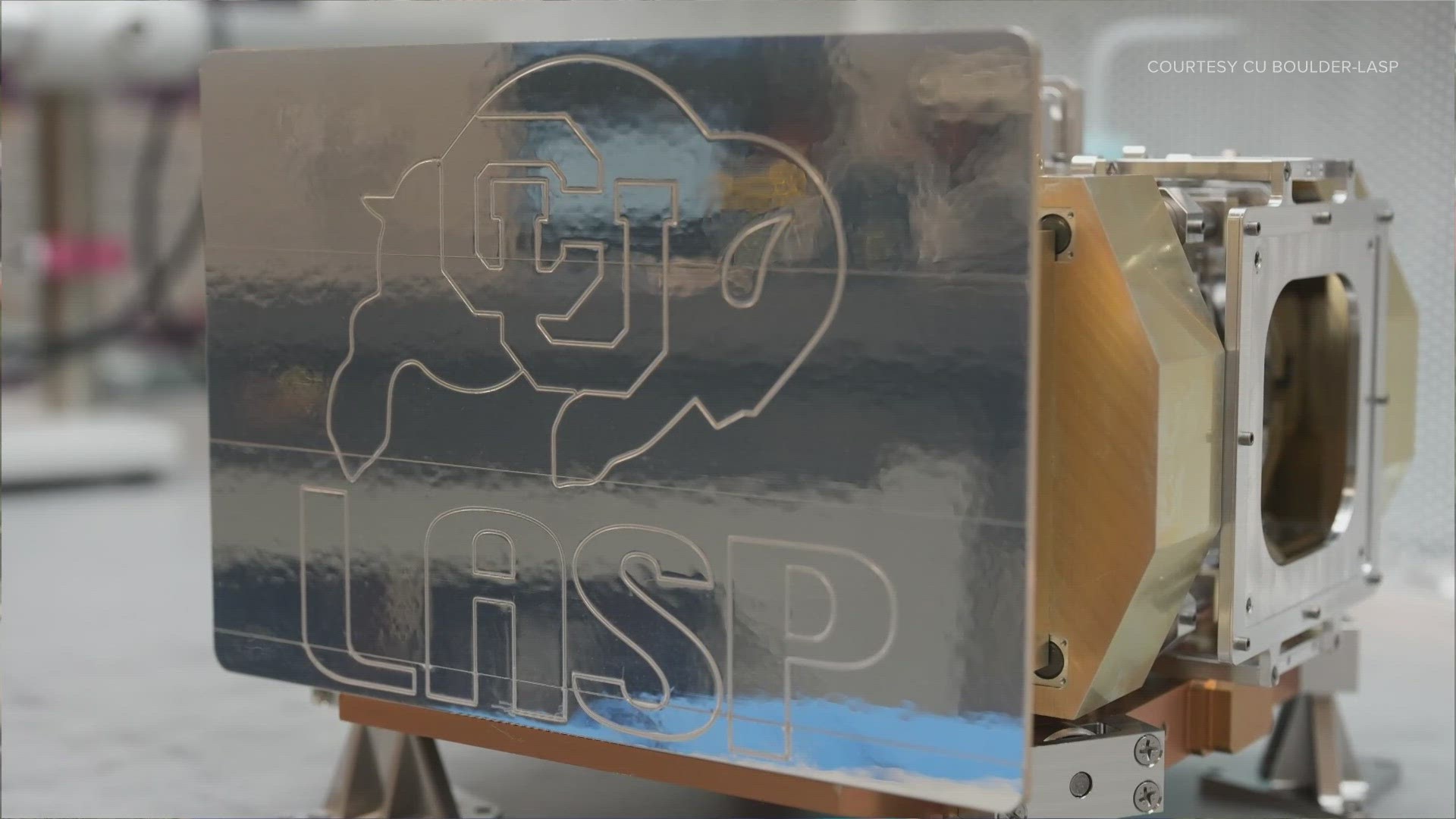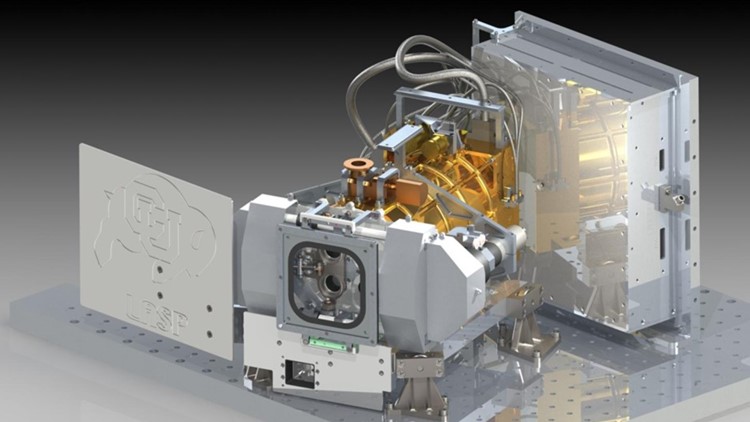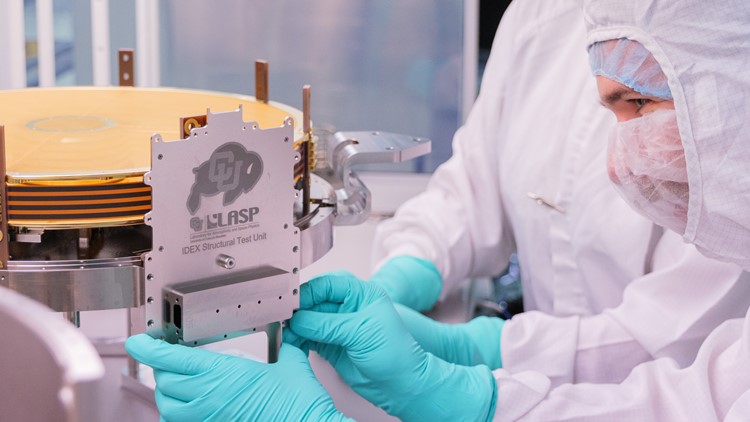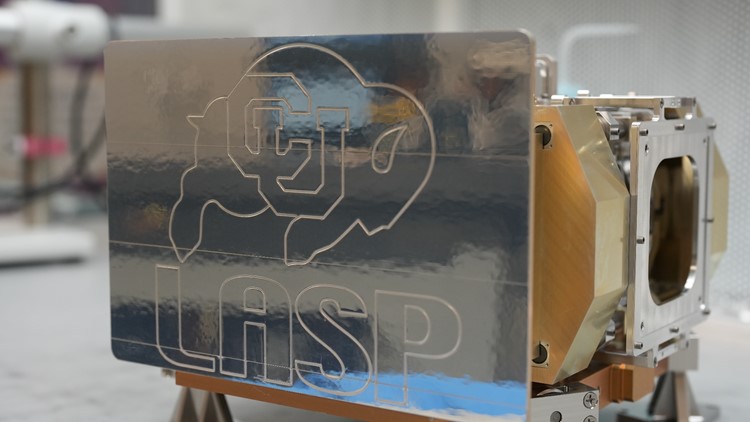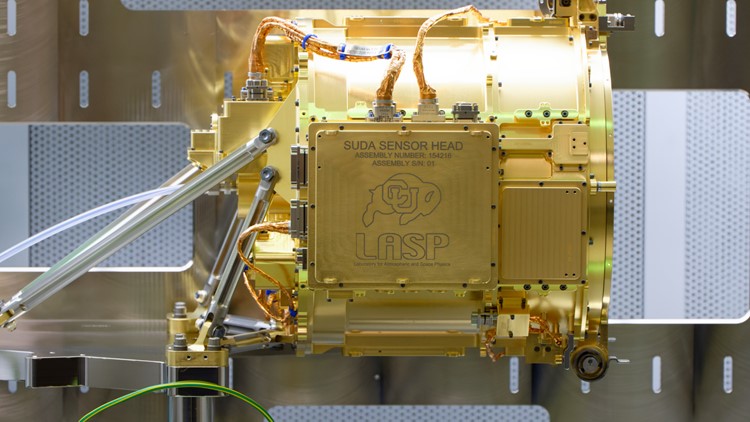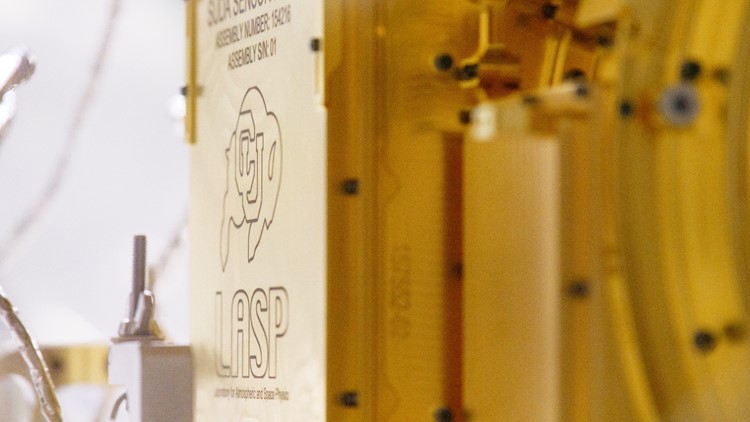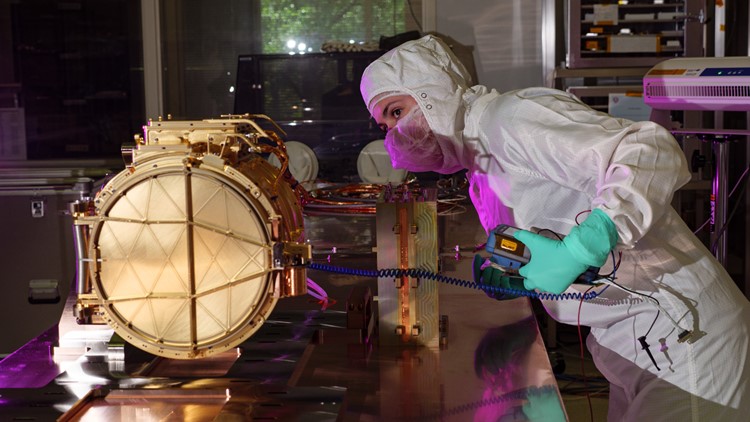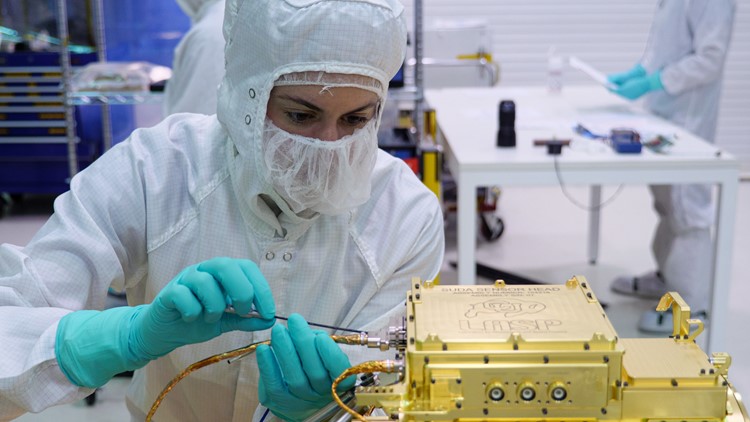BOULDER, Colo. — Ralphie: Boldly going where no bison has gone before.
For more than 30 years, engineers at CU Boulder's Laboratory for Science and Physics have been etching the CU mascot onto scientific instruments bound for outer space.
Thomas Sparn, director of engineering at LASP, is a proud third-generation Buff alum and has worked there since he was an undergrad.
For him, it's been somewhat of a time-honored tradition, bringing together a sense of pride for not only what's been created, but also where they come from.
"You have to understand that creating one of these perfect instruments -- and I say perfect, because an instrument that flies in space has to be perfect -- we don't get a chance to touch it once it's launched," Sparn said. "That's the amount of time invested. So typically a minimum of five years, often 10 years of your life is put into that instrument. So when you see a launch, there's a sense of pride. "
Ralphie on previous CU LASP instruments
According to Sparn, the tradition first started when CU's LASP was tasked to build an instrument for a 1986 mission called SPARTAN Halley.
"While we were building that instrument, the director of the laboratory observed that as the shuttle would deploy our spacecraft from the shuttle bay, the camera on the wrist of the robotic arm would be looking directly at one of our radiators (which was blank white)," Sparn said. "He thought it would be a great idea for us to put Ralphie there so that when the camera came up and plucked our spacecraft out of the shuttle bay, Ralphie would be on the TV."
As the main objective, the instrument was meant to observe the ultraviolet (UV) spectrum of Halley's Comet. Unfortunately, that did not come to pass, as the space shuttle carrying it, Challenger, exploded shortly after launch.
> RELATED: Gary Shapiro looks back on covering the Challenger disaster.
It would be five years later that Ralphie would have her first successful voyage to space. In 1991, she entered into orbit around Earth aboard NASA's Upper Atmosphere Research Satellite, etched onto the SOLar STellar Irradiance Comparison Experiment (SOLSTICE). That instrument helped measure ultraviolet radiation coming from the sun.
Since that point in time, Ralphie has flown on more than a dozen missions, accruing a staggering 5+ billion miles. From her perch on NASA's Cassini-Huygens mission to the edges of the solar system aboard the New Horizons probe, there's no sign of the tradition stopping quite yet.
What's next?
CU Boulder's buffalo logo is now etched on four new space instruments that are slated to launch in the next few years. Among them is the Europa SUrface Dust Analyzer (SUDA), which is destined to launch in October 2024 aboard NASA's Europa Clipper mission. In essence, SUDA will collect and analyze particles coming off the surface, identifying potential building blocks for life.
SUDA instrument aboard NASA's Europa Clipper mission
SUGGESTED VIDEOS: Latest from 9NEWS

